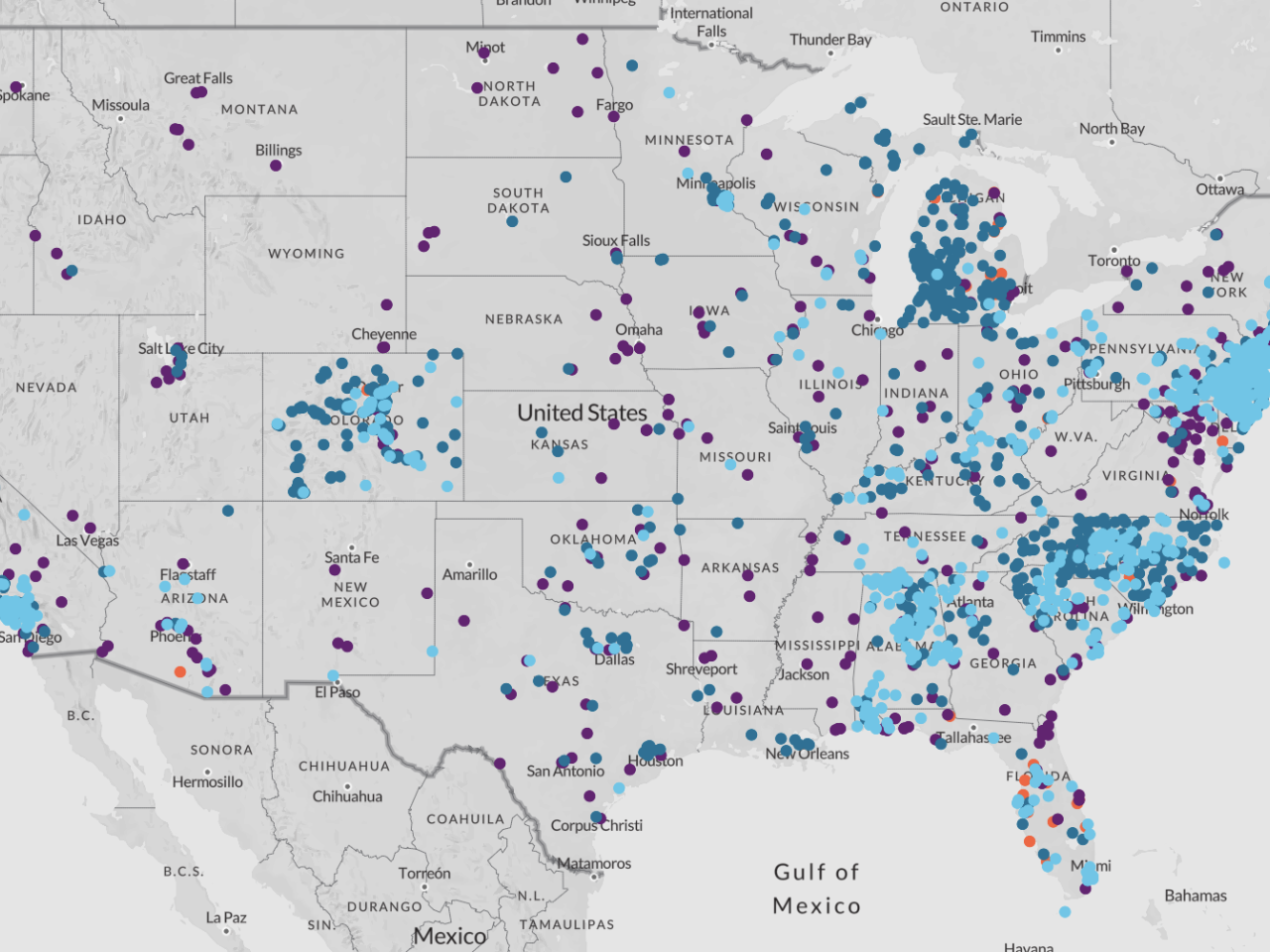WASHINGTON – Today, the National Academies of Sciences, Engineering, and Medicine published a report recommending people with a history of elevated exposure to the toxic “forever chemicals” known as PFAS should be offered medical testing. The report also gives advice for clinicians to reduce their patients’ exposure to these chemicals.
“The entire U.S. population is likely overexposed to these toxic PFAS,” said David Andrews, Ph.D., a senior scientist at the Environmental Working Group. “This NAS report supports the mounting evidence that shows exposure to these forever chemicals causes adverse health effects in people.”
“PFAS exposure affects health, and clinicians should advise their patients to reduce their exposure to these forever chemicals as much as possible – a difficult feat, since they are ubiquitous,” he said.
Last month, the Environmental Protection Agency updated interim lifetime health advisories, or LHAs, for PFOA and PFOS, the two most notorious PFAS. The agency also announced new LHAs for PFBS and Gen-X. LHAs inform what is expected to be a safe drinking water contamination level that's not expected to harm people throughout their lives.
- Interim updated health advisory for PFOA is 0.004 parts per trillion, or ppt
- Interim updated health advisory for PFOS is 0.02 ppt
- Final health advisory for GenX chemicals is 10 ppt
- Final health advisory for PFBS is 2,000 ppt
“This NAS guidance is timely, as people become more aware of their PFAS exposure and ask their physicians how PFAS may affect their health,” said Olga Naidenko, Ph.D., EWG’s vice president for science investigations. “Research on PFAS has advanced by leaps and bounds in the past decade. Last month, we saw the EPA’s dramatic new health risk assessment for these PFAS chemicals, which served as a stark reminder just how toxic they are to human health at extremely low levels.”
The new NAS report and EPA assessment suggest that everyone is likely exposed to PFAS at a level of potential concern, and significantly above a safe exposure value, based on studies of children and reduced vaccine response.
“EWG has been hard at work to educate the public about these toxic forever chemicals for more than 20 years,” said EWG President Ken Cook. “We are gratified by the report’s numerous citations of EWG research on PFAS contamination and steps people can take to avoid exposure.”
An EWG analysis found PFOA and PFOS had been detected above these levels in the drinking water of 2,013 communities serving more than 43 million people.
The number of U.S. communities confirmed to be contaminated with PFAS continues to grow at an alarming rate. As of June 2022, EWG’s interactive PFAS map now includes 2,858 locations in 50 states and two territories known to be contaminated.
“This new report reaffirms and amplifies the warning I have been trying to get out to the public and health officials for decades as to the unprecedented scope and scale of the public health threat posed by these man-made PFAS forever chemicals,” said Rob Bilott, PFAS attorney and author. “The public – those of us exposed to these poisons for decades without our knowledge and consent – should not bear the cost of the public health impacts when we already know exactly which companies caused this problem.”
For decades, polluters knew PFAS were dangerous but hid the risks from public. As far back as 1950, studies by 3M showed PFAS could build up in our blood. By the 1960s, animal studies by 3M and DuPont revealed that PFAS could pose health risks. But the companies kept the studies secret from their employees and the public for decades.
“A separate report released just a few days ago emphasized the billions of dollars of costs these exposures push onto us in the form of increased medical and health care costs,” Bilott added.
Very low doses of PFAS in drinking water have been linked to suppression of the immune system, including interference with vaccines. These chemicals harm the development and reproductive system, such as reduced birth weight and impacts on fertility; increase the risk of certain cancers; affect the metabolism, such as changes in cholesterol and weight gain; and increase cholesterol and create other serious health concerns.
“We need to turn off the tap of PFAS pollution if we want to protect our bodies and the environment,” said Scott Faber, EWG’s senior vice president of government affairs. “The EPA has taken steps to address PFAS but has been slow to restrict the industrial releases of PFAS into the air and water. The agency must also move quickly to require testing for sludge that may be contaminated with PFAS, properly dispose of PFAS wastes, and immediately designate PFOA and PFOS as hazardous substances under our federal cleanup laws.”
PFAS are commonly used in thousands of manufacturing practices and in products, from carpets, clothing, cosmetics, cleaners and nonstick cookware to firefighting foams and protective gear.
Consumers who want to limit their PFAS exposure should avoid most products marketed as waterproof, grease-resistant or long-lasting. They also should look for a “PFAS free” label on products. People also can use EWG’s Skin Deep® database and Healthy Living app to find, and avoid, products that may contain PFAS.
###
The Environmental Working Group (EWG) is a nonprofit, non-partisan organization that empowers people to live healthier lives in a healthier environment. Through research, advocacy and unique education tools, EWG drives consumer choice and civic action.




